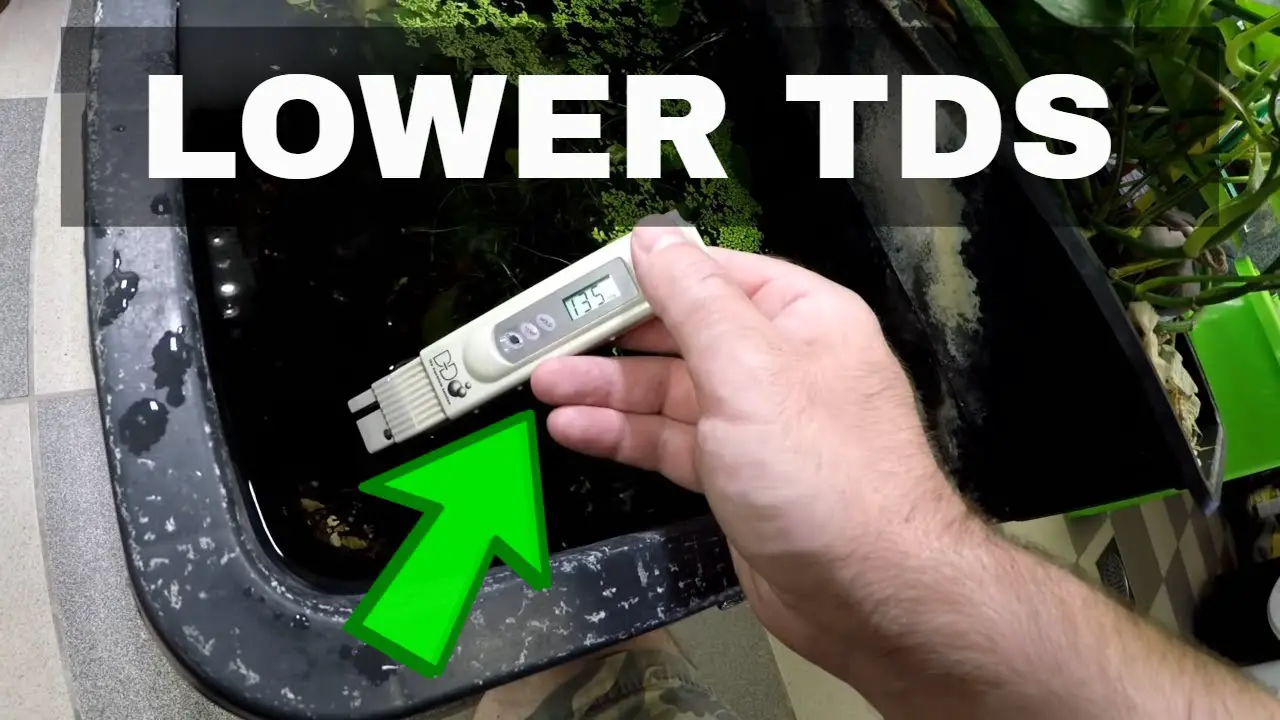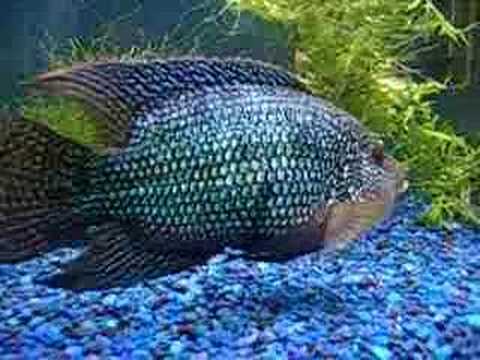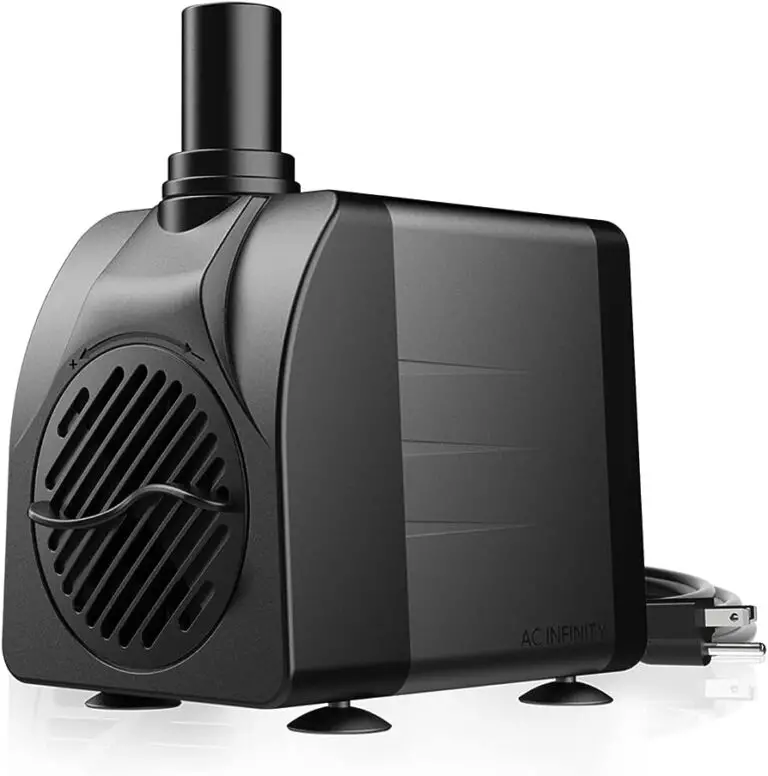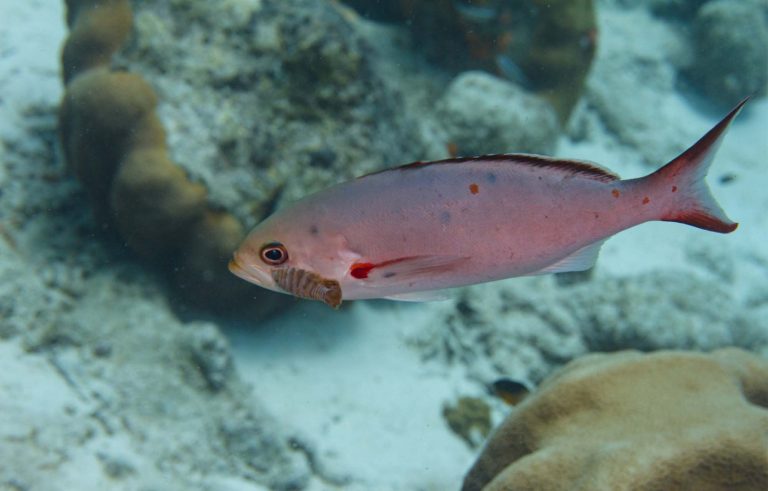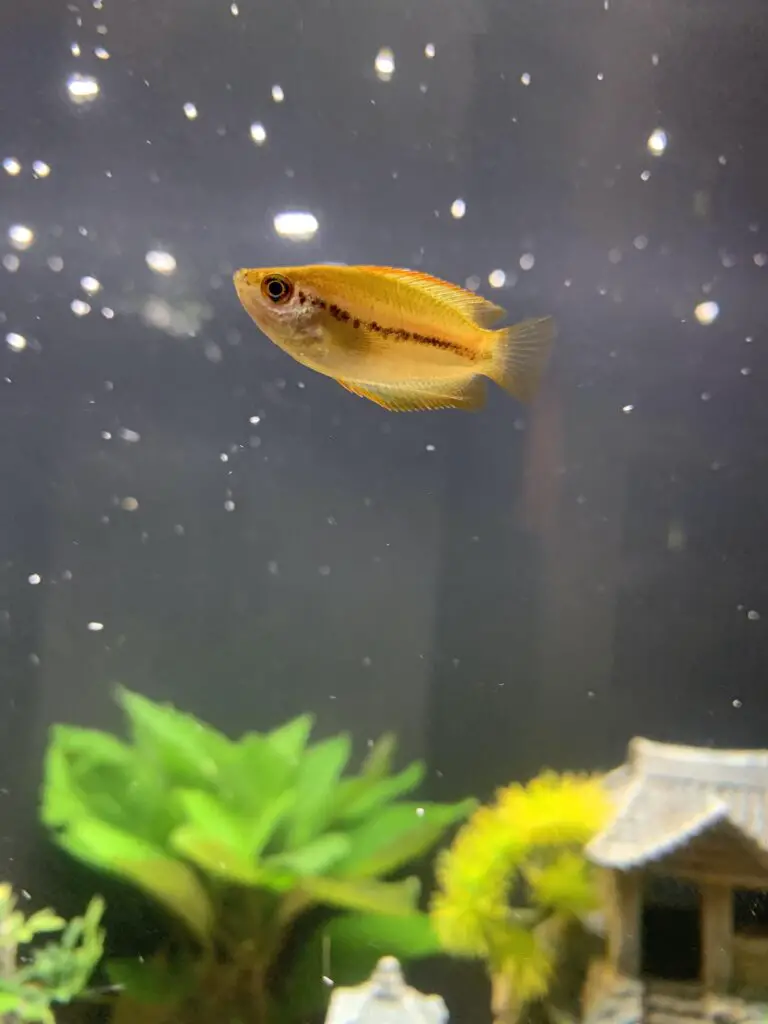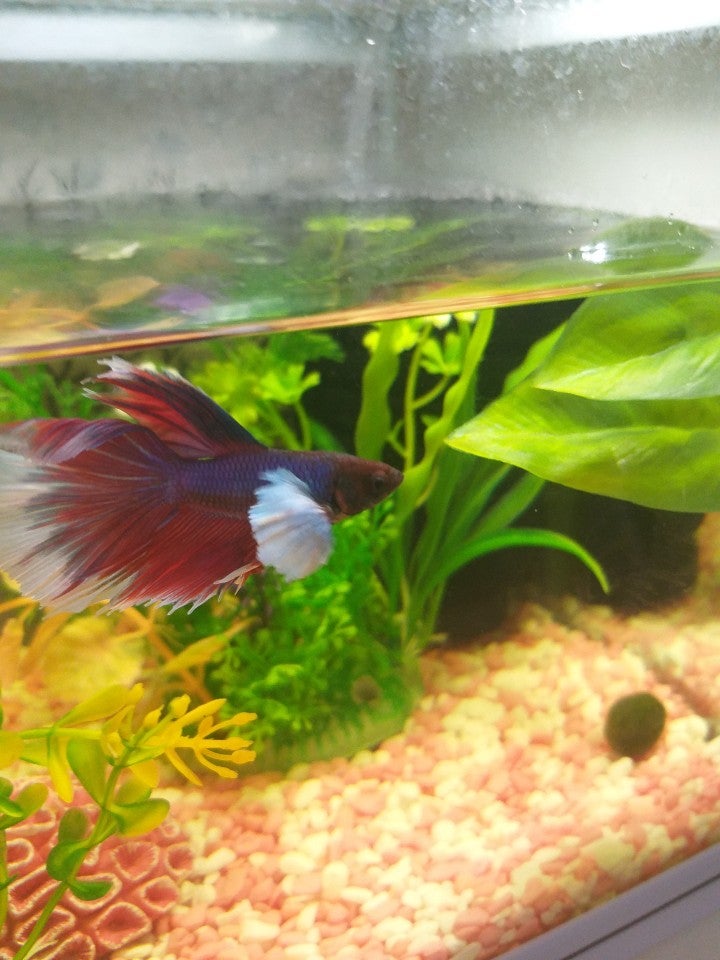How to Lower TDS in Aquarium?
Lowering TDS in an aquarium involves a few steps, including regular water changes, using reverse osmosis (RO) or deionization (DI) filters to remove mineral ions from the water, and performing frequent partial water changes. Begin by testing your tank’s Total Dissolved Solids (TDS) level with a commercial test kit or meter. If your TDS is higher than desired for the type of fish you keep, it’s time to take action.
Start by doing weekly 10% – 25% water changes to reduce the overall concentration of minerals and toxins that accumulate over time in an aquarium. Use RO/DI filters to purify incoming tapwater before adding it back into your tank. This will greatly reduce contaminants such as metals, phosphates and silicates from entering your system. Finally, use activated carbon filtration media to help remove organic compounds that can contribute to high TDS levels in an aquarium environment.
Following these steps should help lower Total Dissolved Solids in your aquarium while providing clean and healthy conditions for aquatic life living within!
- Test the water: Use an aquarium test kit to measure and record the current TDS level of your aquarium water
- Change Water Regularly: To keep TDS levels down, it is important to change at least 10-15% of your tank’s water once a week or more frequently if needed
- This will help dilute any contaminants in your tank that could be increasing the TDS level
- Install a Reverse Osmosis (RO) Filter System: RO filtration systems are designed specifically for reducing Total Dissolved Solids (TDS) in aquariums by pushing tap water through semi-permeable membranes that remove most contaminants from the water as it passes through them before returning clean filtered water back into your aquarium system
- Add Purified Water to Your Aquarium: Once you have installed an RO filter system, use this purified water when topping up or changing out old tankwater instead of using tapwater directly which can introduce higher levels of minerals and salts into your aquarium environment
Ideal Tds for Freshwater Aquarium
Water hardness is an important factor for keeping a healthy freshwater aquarium, and the ideal total dissolved solids (TDS) should be between 50-100 ppm. This range provides optimal water parameters for many popular fish species, allowing them to thrive in their environment. Additionally, TDS levels higher than 100 ppm can cause problems such as bacterial growth and algae blooms.
It’s important to regularly test the water quality of your aquarium to ensure it stays within this ideal range.
How to Lower Tds in Shrimp Tank
If you have high TDS (Total Dissolved Solids) levels in your shrimp tank, there are several ways to lower it. First, make sure to perform regular water changes with dechlorinated and aged water – this will help remove some dissolved solids from the tank. Additionally, you can add activated carbon or other absorbent media to filter out particles and chemicals that cause elevated TDS readings.
Finally, consider investing in a reverse osmosis unit so that all of the water entering your shrimp tank is free of pollutants and contaminants. With these steps in place, you should be able to keep your TDS level within the ideal range for shrimps health and happiness!
How to Lower Tds in Water
If you want to lower the TDS in your water, one of the most effective methods is reverse osmosis filtration. This process uses a semi-permeable membrane that filters out contaminants and allows clean, pure water to pass through. It can reduce TDS levels by up to 99%, depending on how well it’s installed and maintained.
Additionally, carbon filtering systems are also an effective way to reduce TDS levels.
How to Lower Tds in Pool
One of the easiest ways to lower Total Dissolved Solids (TDS) in your pool is to perform regular backwashing, which involves reversing the flow of water through the filter and flushing out dirt, debris and other contaminants. Additionally, you can also add a chemical such as sodium thiosulfate to help reduce TDS levels in your pool. However, it’s important to note that these methods should be used only when necessary; too much backwashing or adding too many chemicals can lead to an imbalance in pH and alkalinity levels.
How to Reduce Tds in Water Treatment Plant
One of the most effective ways to reduce TDS in water treatment plants is by using reverse osmosis. This method works by pushing water through a semi-permeable membrane, which helps to remove dissolved solids such as salts and minerals from the water. In addition, it can also help to remove other undesirable substances like bacteria, viruses, and parasites.
Other methods that are often used in water treatment plants include activated carbon filtration and ion exchange systems. No matter what method is chosen, regular maintenance should be performed on all equipment involved in order to ensure that the system remains efficient and effective at reducing TDS levels.
Ideal Tds for Fish Farming
When it comes to fish farming, the ideal Total Dissolved Solids (TDS) level is somewhere between 200 and 400 parts per million (ppm). This range is considered optimal for most freshwater species of fish, as it provides an optimal balance of oxygen in the water and helps maintain a healthy environment. Too low or too high TDS levels can be detrimental to your fish population so its important that you try to maintain a consistent reading within this range.
Tds for Neocaridina Shrimp
Neocaridina shrimp are the most popular type of aquarium shrimp, and they are known for their hardiness and ease of care. As with any pet, it is important to provide them with an environment that meets their needs in order to keep them healthy. This includes providing plenty of clean water with the appropriate Total Dissolved Solids (TDS) levels.
A TDS reading between 150-250 ppm is ideal for Neocaridina shrimp, as this allows them to thrive in a stable and safe environment.

Credit: aquariume.com
How Do I Reduce Tds in My Tank Water?
If you are looking to reduce the total dissolved solids (TDS) in your tank water, there are several steps you can take. The first is to install a reverse osmosis filtration system, which will remove many of the dissolved minerals from the water. This type of filtration works by forcing pressurized water through a semi-permeable membrane that catches and removes minerals such as calcium and magnesium, leaving behind clean drinking water for your household.
Additionally, having regular maintenance performed on your tank can help prevent build-up of sediment or organic matter that could increase TDS levels over time. You should also check with your local municipality to see if they offer periodic testing services for TDS levels in both residential and commercial wells/tank systems – this way you know exactly what kind of particles might be present in the water before installing any sort of filtration system. Finally, regular cleaning and flushing out of tanks can ensure that no residue remains at all times – while this may not directly affect TDS levels it can certainly help maintain cleaner overall water quality!
What Causes High Tds in Aquarium?
High Total Dissolved Solids (TDS) in an aquarium can be caused by a number of factors. One of the most common causes is overfeeding, which can cause uneaten food to break down and increase TDS levels. Another factor is inadequate water changes; if you do not replace old tank water with fresh, clean water regularly enough, the accumulation of waste from fish and debris will result in higher TDS levels.
Additionally, some aquarium additives such as activated carbon or medications may also contribute to elevated TDS readings if used excessively or for prolonged periods of time without proper maintenance. Finally, certain types of rocks or substrates can release minerals into the tank water that will raise its TDS level when exposed to moisture for extended durations. All these reasons make it important to monitor your aquarium’s TDS level on a regular basis so that any potential problems are detected early and dealt with accordingly.
How Do I Lower the Tds in My Planted Tank?
Lowering the TDS (total dissolved solids) in a planted tank can be challenging, but it isn’t impossible. The key to successful management of TDS is regular water changes and monitoring of your water parameters. Water changes are essential for removing organic build-up and other pollutants that accumulate over time and cause an increase in your tanks TDS levels.
When doing a water change, use dechlorinated or pre-treated tap water to avoid adding any additional minerals or chemicals that would raise the TDS levels further. You should also monitor your aquariums pH and hardness since both will affect how quickly certain minerals dissolve into the tank’s environment, leading to higher TDS readings. If necessary, you can add buffers or reverse osmosis systems to help reduce the amount of harmful elements entering your system while still allowing beneficial ones like calcium and magnesium to remain at healthy levels.
Additionally, using RO/DI units when changing out large amounts of water can dramatically decrease the amount of impurities going into your aquarium as well as lowering overall salinity if necessary for specific plants or fish species you wish to keep in your tank. With careful attention paid towards regular maintenance tasks such as these, managing and controlling total dissolved solids within an aquarium is possible!
Do Plants Reduce Tds in Aquarium?
Yes, plants can help reduce the Total Dissolved Solids (TDS) levels in an aquarium. Plants act as natural filters for the water by absorbing nutrients and other compounds that would otherwise cause a buildup of TDS. The process is known as denitrification, which involves converting nitrates into nitrogen gas.
This helps to keep the TDS level low because nitrate is one of the main sources of dissolved solids in aquariums. Additionally, when plants photosynthesize they consume carbon dioxide from the water and release oxygen back into it- this also helps to lower TDS levels while keeping your fish happy and healthy!
How to lower TDS in an Aquarium | Lowering Aquarium TDS the easy way.
Conclusion
In conclusion, lowering the TDS in your aquarium is an important task that should not be taken lightly. With proper filtration and regular water changes, you can easily maintain a healthy environment for your fish and other aquatic animals. Additionally, using RO/DI systems or reverse osmosis to remove impurities from the source water will help ensure that your tank remains balanced.
Finally, monitoring the TDS levels regularly with test kits or meters is essential to keeping your aquarium safe and healthy.
